Bell Training for Dogs

* All Sniffspot articles are reviewed by certified trainers for quality, please see bottom of article for details *
How does your dog let you know they need to go outside? Scratching at the door or simply standing beside it in silence may not be ideal. Why not train them to alert you in a way that works for both of you? There are many options available to help your dog communicate when they need to go out.
This article is not about potty training (house training). If you need help with potty training for puppies or adult dogs, reach out to a credentialed trainer who utilizes modern, science-backed, humane training methods.
Bell/Button Options
Most options involve either a physical metal bell that rings, or a button to press and make a sound. Select an alert that your dog willingly interacts with, being aware of any issues they may have with sounds. Also consider your dog’s communication and play style when choosing the product that will work best for them. For example, some dogs eagerly nose your hand for attention, and others may tap with a paw for scratches.
This simple string of bells similar to sleigh bells can hang near a door or from the handle, and can be struck with a snout or paw. (Similar product: Noodoky Dog Doorbells). A simple potty bell like this is the best option for renters as there is no equipment to install.
This product is meant to be pressed by a snout or paw, and features a wireless transmitter with a number of ringtones. Similar products may come with additional buttons and receivers. (Similar product: EverNary Dog Door Bell). Be sure to review set up instructions for these devices.
Learning Resources Recordable Answer Buzzers
These large buzzer buttons that your dog can activate with their snout or paw simply make a sound when they are pressed. Record a statement, such as “outside.” Similar recordable button products may have a smaller or larger button.
Target Training
Teaching your dog to press their snout or paw onto an object is known as target training. The basics are easy: each time your dog touches your palm with their snout or paw, they get a treat. A hand target is also useful behavior to teach puppies as they begin to walk on a leash! Keep each training session to a few minutes and use plenty of positive reinforcement.
The easiest way to start target training is with your hand. You’ll just need a lot of smelly, chewy, bite-sized, training treats. Most soft average-value treats, like Zuke’s, can be broken into 2-4 bites.
Nose Targeting
To begin target training, hold your hand flat (with the palm perpendicular to the ground) and close to your dog’s nose. When your dog’s nose touches your hand, say “yes,” and hand them a small treat from your other hand. If a clicker is more your speed, click and treat! Repeat this many times until your dog understands that holding your hand out flat means each time they touch it with their nose, hear a marker, and then get a treat. This exercise takes most dogs only a few minutes to understand.
Next, place a post-it note on your palm. Repeat the process of teaching your dog to target your hand with the note stuck to your hand. When their nose touches the post-it, say “yes,” and hand them a treat from your other hands. Repeat this many times until your dog understands that they should touch the post-it with their nose. At this point, you could also begin using a verbal cue like “touch” to cue your dog to touch the target with their nose.
Paw Targeting
Get a small towel, piece of fabric, or other small, flat item that you are able to cut into smaller pieces (cardboard, etc.). This is your paw target.
Place the paw target on the ground. Any time your dog interacts with the target in any way (even sniffing), say “yes,” (or use a clicker) and hand them a treat. After a few interactions, get more specific about the way you’d like them to interact with the target. Any time one of their front paws touches the target, say “yes,” and give them a treat.
Once your dog understands that placing their paw on the target means they get a treat, cut it into a smaller piece. Repeat many repetitions of your dog touching the smaller target with their paw, saying “yes,” and giving them a treat. At this point, you could also begin using a verbal cue like “touch” to cue your dog to touch the target with their paw.
Continue this process until the paw target is small enough to stick to the bell you have chosen (physical metal bell, buzzer, or button).
Introducing New Sounds
Be sure to evaluate your dog’s sensitivity to the sound your chosen doggy doorbell makes before allowing it to make the noise at full volume. You may want to play the sound at a distance from the dog, muffle the sound with a towel, or both. Sound the device, toss your dog a great treat, and repeat a few times until you are satisfied that the sound your chosen doggy doorbell makes will not frighten your dog. If they are sensitive, they may require a slower introduction to the sound itself. The target training and the bell come together in the next phase.
Teaching Your Dog to Ring a Bell
Before you begin teaching your dog to target a bell, doorbell button, or buzzer, introduce them to it by placing it on the floor. If it is an electronic doorbell or buzzer, make sure it is turned off at first. If it is a physical metal bell, find a way to dampen the sound, like with a towel, or by leaving the bells in the package if they come in one. If they choose to sniff or interact with the object, say “yes,” and toss a treat away from the object. This way the dog can choose to come back toward the object if they are comfortable interacting with it. Repeat this a few times.
Next, allow your chosen potty bell to make noise when the dog interacts with it, and repeat the initial interaction protocol (say “yes” and place a treat on the floor away from the object) a few times until they are used to the sound. Now you can put together the chosen bell (physical metal bell, buzzer, or button) with the nose or paw target.
After you’ve established the post-it nose target, or small paw target, stick the target to the bell you have chosen. Cue the dog to touch the target with their nose or paw. When your dog’s nose or paw touches the bell and makes a sound, say “yes,” and hand them a treat.
Repeat the process of rewarding your dog for touching the target with their nose or paw many times.
Ringing the bell to go outside
Once your dog is able to nose or paw target the bell you have selected, hang your bells near the door or by the handle. When it’s potty time, cue them (“touch”) to ring the bell before you open the door to go outside. Cue “touch,” and when they touch the bell say “yes,” then open the door for them to go out. Praise and going outside serve as positive reinforcement.
If you are still working on potty training your dog, you may simply sound your training bells each time you open the door to take them out so this stage is already part of their routine before they begin target training.
It may take many repetitions of this process before your dog makes the connection between ringing the bell and going outside, and the entire process may take a few weeks. If you need help with house training (potty training) or with this process, reach out to a credentialed trainer who utilizes modern, science-backed, humane training methods.
Trainers that reviewed this article
There is so much misinformation out there, we want to make sure we only provide the highest quality information to our community. We have all of our articles reviewed by qualified, positive-only trainers. The trainers that review our content are reviewed by other trainers to ensure that we have the best quality filters on our content.
This is the trainer that reviewed this article:
Marnie Montgomery
PMCT4, CPDT-KA
Tellington TTouch® Practitioner
Fear-Free Certified Professional
JOYFUL DOG LLC
www.joyfuldogllc.com
Most recent articles

What is Dog Sledding? Your Complete Guide
Dog sledding. It's the stuff of legends, inspiring movies like Eight Below and heroic tales like Balto's life-saving run. But what is dog sledding really all about beyond the Hollywood portrayal? This guide explores everything from the basics of mushing to specialized topics like types of dog sleds and sled dog training. We'll even touch on how to build a dog sled yourself. Ready to discover the real world of dog sledding? Let's go.

American Airlines Pet Policy: A Simple Guide for Dog Owners
Flying with your dog on American Airlines? Understanding their pet policy is key to a smooth trip. This guide covers everything about the American Airlines pet policy, from carrier requirements and fees to tips from seasoned pet travelers in the Sniffspot community. Let's make sure your trip is paw-sitive from start to finish.

Deaf Dog Training: A Comprehensive Guide
* All Sniffspot articles are reviewed by certified trainers for quality, please see bottom of article for details *

Top Sniffspot Locations: Find the Perfect Dog Park
Looking for the perfect dog park? Whether you need a wide-open public space or a private, fenced-in spot, this guide will help you find the best dog parks across the US. We'll cover top-rated public parks, the perks of private dog parks, and even explore Sniffspot locations – giving your pup a safe and fun place to play. Ready to find your dog's new favorite spot? Let's go!

Dock Diving Dogs: Everything You Need to Know
Have you heard the buzz about dock diving lately? Dock dogs calls it the fastest-growing sport on four legs. Dock diving, or dock jumping, is a high energy aquatic activity where dogs of all breeds, shapes, and sizes launch themselves off of a raised dock into a pool of water. (Sometimes they even retrieve a toy in the air before making a splash.)

How to Train Your Dog to Ignore Other Dogs (Expert Guide)
Is your dog overly enthusiastic, maybe even a little too friendly, when they see other dogs on walks? Or perhaps their reaction is fear or aggression, making outings stressful? Learning how to train your dog to ignore other dogs is key for peaceful walks. This guide offers simple, practical advice and training techniques to help your dog master polite detachment. We'll cover everything from understanding why your dog reacts to how to train your dog to ignore other dogs when walking, so you can both enjoy relaxed strolls together.
Related articles
Top dog guides per area
Dog training guides

Dog Food Aggression: Why You Shouldn't Punish It
Does your dog ever growl when you walk by their food dish? Maybe they get possessive of treats, carrying them far away and giving you side-eye when you start to approach — or snarling at your other pets or children if they get too close.

Scent Training for Dogs: A Beginner's Guide
As almost every dog owner is aware, the nose of a dog is an amazing thing. Just as they can pick up sounds we can’t hear, their sense of smell and ability to pick up scents is well beyond ours. In fact, dogs have 40 times the number of olfactory receptors as humans.

Service Dog Training Costs: DIY vs. Pro
More than 80 million Americans rely on their service dogs to help them navigate the world. Task-trained assistance animals perform a huge range of life-changing—in many cases, life-saving—services: These dogs act as eyes for visually impaired handlers, provide mobility support, alert to seizures and blood sugar crashes, interrupt anxiety attacks, remind their people to take medications, and so much more.

How to Deal With Puppy Potty Training Regression
You thought those dreaded middle-of-the-night potty breaks were over. You were finally free from cleaning up puppy puddles. Then, suddenly, your furry friend starts having accidents again. It's frustrating, right? This puppy potty training regression is more common than you think. Don't worry; we'll help you get your pup back on track. We'll cover the common causes, offer practical solutions, and give you actionable steps to tackle this challenge together.

Dirty Dog Syndrome: Causes, Solutions, and Prevention
It's a cringe-worthy moment every dog owner dreads: your furry friend chowing down on something truly disgusting. If your dog has a penchant for poop, you're dealing with coprophagia. It's more common than you think, and thankfully, often manageable. This article explores the reasons behind dirty dog syndrome, from instinct to learned behavior. We'll also give you practical tips to help break this unpleasant habit.
Dog enrichment guides

Top 10 Dog Water Parks in the US
Do you have a water-loving dog looking to burn some energy? There are countless dog parks to visit throughout our country — but some of them become far too hot in the midday sun to be safe for your pets to play. That’s why we’ve put together a list of some of the best dog water parks throughout the United States! At these locations, your pup can frolic, splash, and swim to their heart’s content.

Best Toys for Herding Dogs: Keeping Your Pup Happy & Engaged
Herding dogs are amazing, intelligent companions. But that also means they need more than just a simple game of fetch. Finding the right toys for herding dogs is key to keeping them happy and stimulated. This article explores some of the best toys for herding dogs, including options specifically for breeds like Border Collies and Australian Shepherds. We'll help you discover the perfect herding toys for dogs to tap into their natural instincts and keep them entertained for hours.

Ultimate Guide: Dog Toys for Aggressive Chewers
Does your dog destroy every toy you give them? Is your house littered with remnants of fabric and stuffing of all different sizes? Are you tired of investing in “indestructible” toys only for your pup to still dismantle—or worse, get bored of—them in just a few days?

Daily Exercise Calculator: How Much Exercise Does Your Dog Need?
Everyone knows dogs need exercise, but how much is enough? Walks are great, but creating a truly balanced fitness plan means understanding your dog's specific needs. This post helps you develop a daily exercise calculator for your dog, considering breed, age, and lifestyle. We'll cover fun activities, understanding exercise intensity, and recognizing when your pup has had enough. Let's create a plan that keeps your dog happy and healthy!

Complete Guide To Herding With Dogs
* All Sniffspot articles are reviewed by certified trainers for quality, please see bottom of article for details *
Dog reactivity guides

Rottweiler Aggression: Truth vs. Myth
Many dogs have gotten a bad reputation over the years for being "dangerous breeds." Rottweilers are among them. Like pit bulls and other large, blocky-headed types of dogs, these powerful and beautiful animals are often assumed to be aggressive.

What Is a Reactive Dog? A Practical Guide for Owners
Does your dog suddenly transform into a barking, lunging Tasmanian devil on walks? It's stressful for both of you. If this sounds familiar, you might have a reactive dog. Understanding what is a reactive dog is the first step to calmer walks. We'll explore the common triggers and give you actionable strategies to manage and modify this behavior. Let's turn those stressful walks into enjoyable outings.

How to Socialize a Reactive Dog: A Step-by-Step Guide
Does your dog display reactivity to other pets or people? Maybe they’re a new rescue pup and are still settling into your home. Or they were sick growing up, so you missed their critical socialization period. Possibly they’ve had a bad experience after being raised as a normal puppy.

What Is a Reactive Dog? A Complete Guide
Is your dog overly excited or fearful around other dogs? Do they bark, lunge, or whine? You might have a reactive dog. Many dog owners face this challenge. Understanding what a reactive dog is is the first step to helping them. This guide explores the common causes of dog reactivity, explains what makes a dog reactive, and offers practical tips and resources. Let's work together to build a stronger bond with your dog and enjoy stress-free walks.

Best Online Dog Training for Reactive Dogs: A Practical Guide
Does your dog's reactivity make walks stressful? You're not alone. Many dog owners face similar challenges. This guide offers practical advice and support for managing reactivity, including finding the best online dog training for reactive dogs. We'll connect you with reactive dog support groups, share training tips, and explore resources like the best dog training app for reactive dogs. Let's build a stronger bond with your dog, together.
* All Sniffspot articles are reviewed by certified trainers for quality, please see bottom of article for details *
Sniffspot community guides

The State of Public Dog Parks Across the United States
From 2009 to 2020, there was a 40 percent increase in the development of public dog parks. Designated spots for canine exercise have become commonplace in every major city in North America — many pet owners won’t even consider renting an apartment that doesn’t have its own fenced-in pet area for their canine companions.

How This Family is Affording Their Dream Property Through Renting it Hourly to Dogs
Thousand Oaks, California has been a safe haven for Sniffspot host, Jen, since childhood. Having grown up in busy Santa Barbara, Jen, an introvert from an early age, would seek out solitude and serenity away from tourists attractions and droves of people visiting from elsewhere. “My grandparents own 60 acres about a 30 minute drive from here, and I grew up spending every summer and every holiday visiting them on the ranch,” Jen explained. “In Santa Barbara, we wouldn't go to the beach on the weekend because that's where everybody was, so you'd find places off the beaten path where the tourists weren't. For me, the ranch was just my happy place.”

Host Tips: Ellen K. What Makes Sniffspot Successful for Me
Ellen is the host of Country Pasture Getaway, one of Sniffspot's most popular sniff spots. She has taken the time to write up the lessons she has learned about how to be a great sniff spot host.

How this Oregon Farmer is Making a Business From Renting Her Land to Dogs
Just 20 minutes outside of the busy city of Portland, Oregon, and settled right on the banks of the Columbia River, you’ll find what countless visitors have flocked to the area in search of – mountain views, crisp, clean air, and running water for miles. What you might not expect to find, however, is a hidden oasis designed just for dogs and their people, owned and operated by a farming couple and enjoyed by visitors on two legs, and four.

Host Tips: Fran T. Providing Great Guest Service at our Spot
Fran is the host of Ranch Setting, one of Sniffspot's most popular spots. She has taken the time to write up the lessons she has learned about how to be a great Sniffspot host.
Top dog trainers in the US

The Best Dog Trainers in the United States of 2025
This is a list of the top dog trainers in the United States, based on votes from the Sniffspot community and the general public.
The Best Dog Trainers in Seattle, WA of 2025
This is a list of the top dog trainers in Seattle, WA, based on votes from the Sniffspot community and the general public.
The Best Dog Trainers in Portland, OR of 2025
This is a list of the top dog trainers in Portland, OR, based on votes from the Sniffspot community and the general public.
The Best Dog Trainers in Los Angeles, CA of 2025
This is a list of the top dog trainers in Los Angeles, CA, based on votes from the Sniffspot community and the general public.
The Best Dog Trainers in New York, NY of 2025
This is a list of the top dog trainers in New York, NY, based on votes from the Sniffspot community and the general public.
City dog parks guides

Top 10 Indoor Dog Parks: A US Guide
Looking for a space to play with your dog no matter what the weather’s like outside? Look no further than our list of the best indoor dog parks in the United States! These climate-controlled spaces are growing in popularity as pet ownership increases throughout the country. As a bonus, many of them also offer dog training, boarding, grooming, or daycare services on the premises.

15 Best Dog Parks in the US: Public & Private
Searching for the best off-leash dog parks near you in the United States? Whether you're looking for public dog parks with open spaces or private, fully-fenced areas, this comprehensive guide has you covered. Discover top-rated parks across the country, plus essential tips on what to bring and what to expect for your next adventure.

Dog Parks Near Me: Las Vegas Edition
Looking for the perfect dog park near me in Las Vegas? You're in luck! This guide explores all the best options for your pup, from public dog parks to private dog parks near me on Sniffspot. We'll help you find the ideal spot for playtime, socializing, and fresh air. Plus, we'll cover essential etiquette and safety tips to ensure a happy visit for everyone. Get ready for some tail-wagging fun!

Top Sniffspot Locations: Find the Perfect Dog Park
Looking for the perfect dog park? Whether you need a wide-open public space or a private, fenced-in spot, this guide will help you find the best dog parks across the US. We'll cover top-rated public parks, the perks of private dog parks, and even explore Sniffspot locations – giving your pup a safe and fun place to play. Ready to find your dog's new favorite spot? Let's go!

Sniffspot: Portland's Best Private Dog Parks
Ready to discover Portland's best dog parks? Whether you're looking for a public park or the unique experience of a private Sniffspot, this guide has you covered. We'll help you find the perfect spot for your pup, with tips on what to bring, how to prepare, and even understanding dog body language. Plus, we'll explore some top Portland dog parks, including public and Sniffspot options, so you can plan your next dog-friendly adventure in the City of Roses.
Dogs breeds

German Shepherd Dog: Breed Facts, Experience and Tips from 9K+ Owners
Discover the German Shepherd Dog, a breed celebrated for its intelligence, loyalty, and versatility. Known for its impressive size and smooth, graceful movements, German Shepherds excel in various roles, including as guide, therapy, bomb detection, and police dogs, while being a devoted family companion.

Labrador Retriever: Breed Facts, Experience and Tips from 9K+ Owners
Discover the Labrador Retriever, a breed celebrated for its playful nature, affectionate temperament, and trainability. Labradors are known for their friendly demeanor and adaptability, making them perfect family companions and versatile working dogs. As one of the most popular types of retrievers, Labs are ideal companions for various lifestyles and are recognized by the American Kennel Club (AKC) as an excellent breed for families.

Golden Retriever: Breed Facts, Experience and Tips from 9K+ Owners
Discover the Golden Retriever, a popular breed celebrated for its affectionate, playful, and trainable nature. Considered a large dog, Golden Retrievers were originally bred in Scotland for hunting and retrieving game beginning in the 1860s. Today, they're recognized by the Kennel Club and the American Kennel Club (AKC) as one of the most beloved companion dog breeds.

American Staffordshire Terrier: Your Complete Guide
Think American Staffordshire Terriers are tough? Think again. While their muscular build might intimidate some, these dogs are known for their playful and loyal personalities. This guide draws on the experience of nearly 10,000 AmStaff owners to reveal the truth about this often misunderstood breed. Want to learn more about caring for an American Staffordshire Terrier? You're in the right place.

Australian Shepherd Facts: Breed Info & Care Guide
Discover the Australian Shepherd, an AKC breed celebrated for its trainable, playful, and affectionate nature. Despite its name, the Australian Shepherd is actually a native breed to the United States, originally developed to breed on farms and ranches. Considered a medium dog, Australian Shepherds were bred for herding beginning in the 1950s. As one of the high-energy breeds, Aussies are known for their boundless energy and need for regular exercise, including aerobic exercise.
Top dog names in the US
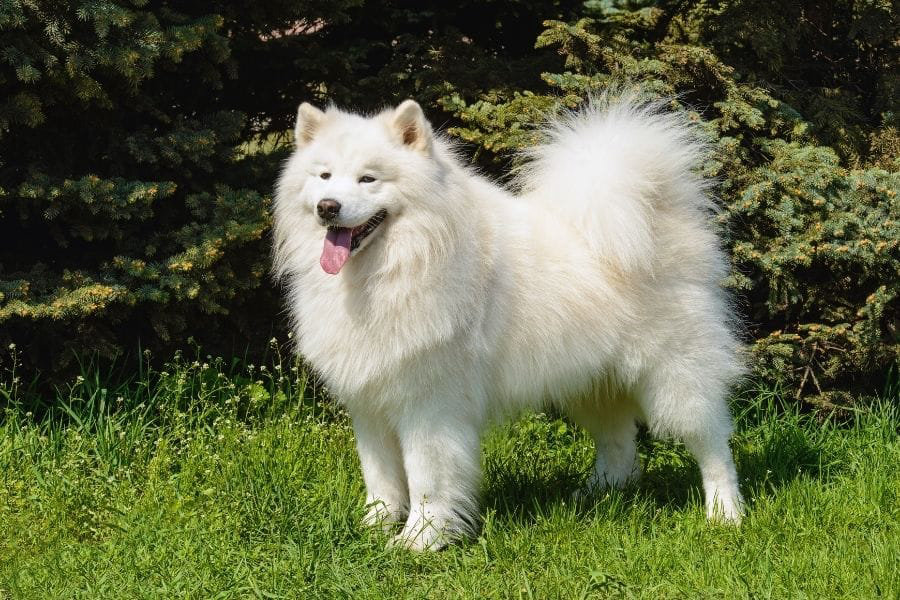
Top 1,000 Most Popular Dog Names
Looking for the perfect dog name for your new pup? We have created filterable lists of dog names from our database of hundreds of thousands of Sniffspot users. You can filter by gender, breed and state to find the most cute, unique and creative dog names.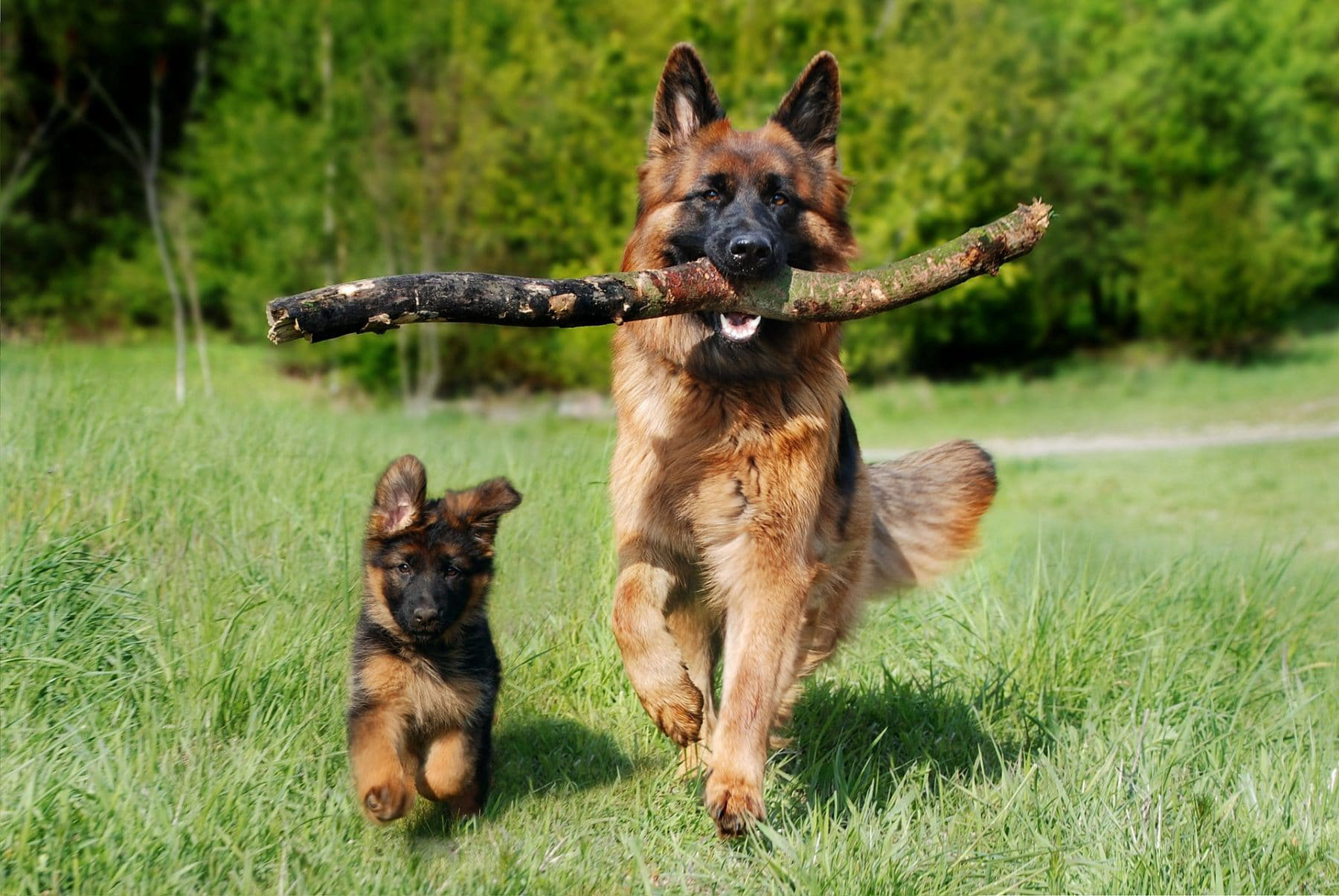
Most Popular Male Dog Names
Looking for the perfect dog name for your new male pup? We have created filterable lists of male dog names from our database of hundreds of thousands of Sniffspot users. You can filter by gender, breed and state to find the most cute, unique and creative male dog names.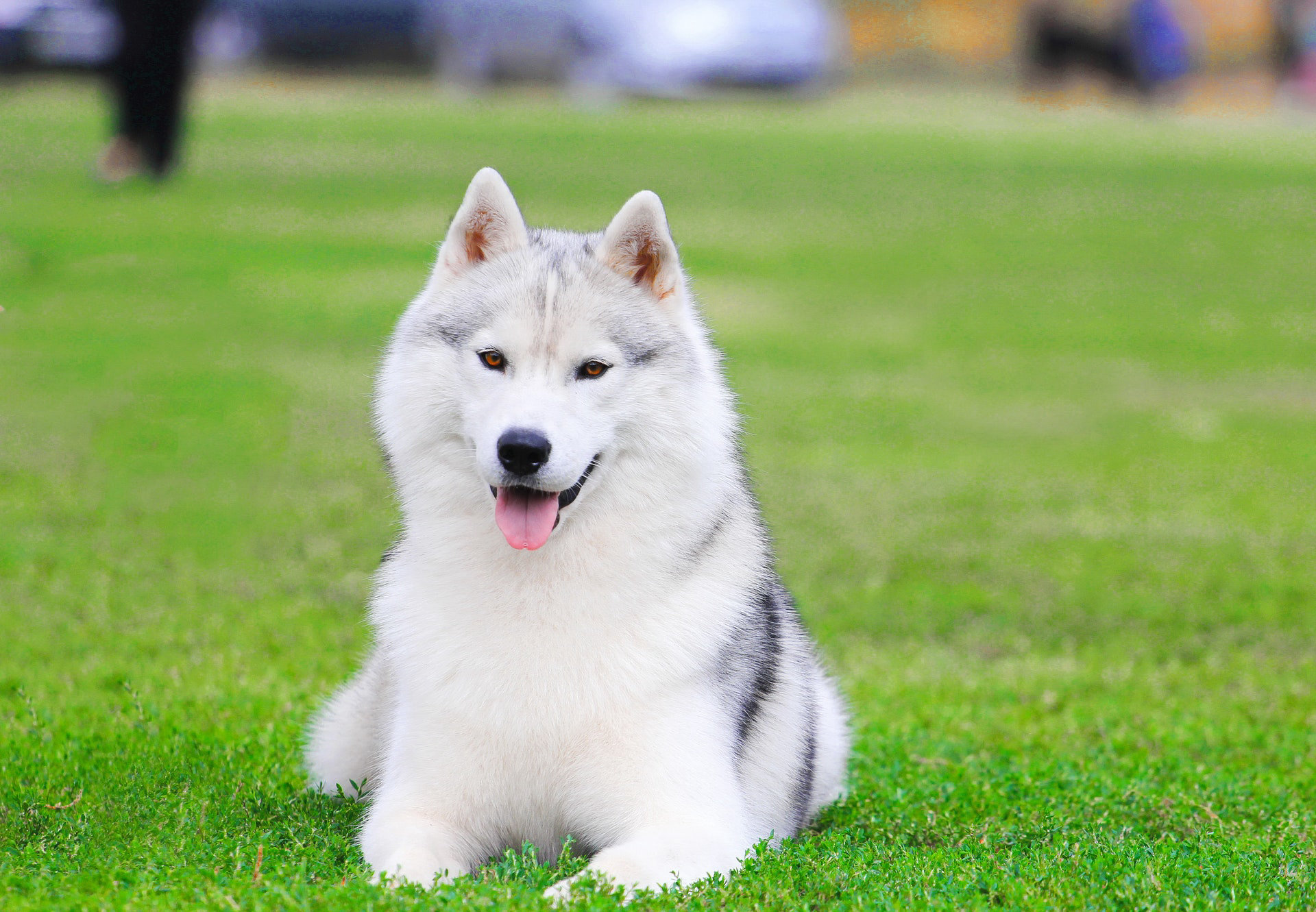
Most Popular Female Dog Names
Looking for the perfect dog name for your new female pup? We have created filterable lists of female dog names from our database of hundreds of thousands of Sniffspot users. You can filter by gender, breed and state to find the most cute, unique and creative female dog names.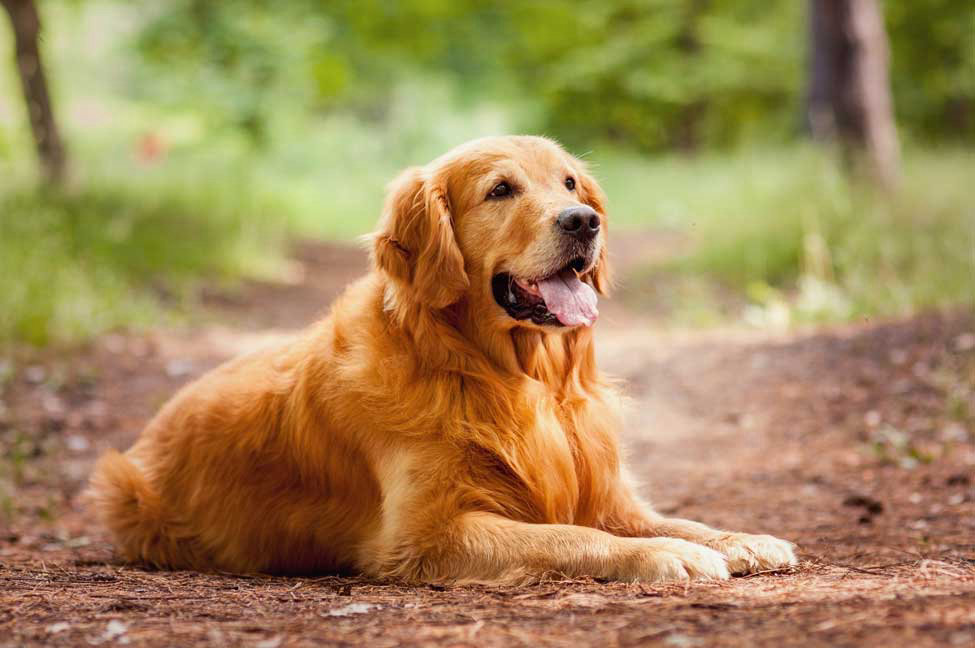
Most Popular Golden Retriever Names
Welcome to our comprehensive list of Golden Retriever dog names, curated from our vast database of Sniffspot users. Filter through hundreds of thousands of options by gender, breed, and state to discover the most adorable, original, and imaginative names for your beloved Golden Retriever.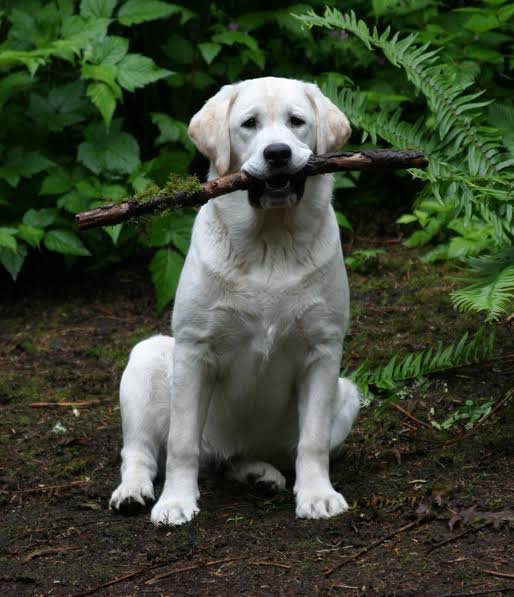
Most Popular Labrador Retriever Names
Welcome to our Labrador Retriever dog names page! Here you can browse through filterable lists of names for your beloved furry friend, ranging from cute and classic to unique and creative options. Our database of hundreds of thousands of Sniffspot users ensures you'll find the perfect name for your Labrador Retriever, whether you're seeking a name for a male or female, based on breed or state.
Top dog rescues in the US

The Best Washington Dog Rescues & Shelters in 2025
This list showcases the top dog rescues & shelters in Washington. These remarkable organizations have been recognized for their unwavering dedication to the well-being of countless dogs.
The Best Oregon Dog Rescues & Shelters in 2025
This list showcases the top dog rescues & shelters in Oregon. These remarkable organizations have been recognized for their unwavering dedication to the well-being of countless dogs.
The Best California Dog Rescues & Shelters in 2025
This list showcases the top dog rescues & shelters in California. These remarkable organizations have been recognized for their unwavering dedication to the well-being of countless dogs.
The Best Florida Dog Rescues & Shelters in 2025
This list showcases the top dog rescues & shelters in Florida. These remarkable organizations have been recognized for their unwavering dedication to the well-being of countless dogs.
The Best New York Dog Rescues & Shelters in 2025
This list showcases the top dog rescues & shelters in New York. These remarkable organizations have been recognized for their unwavering dedication to the well-being of countless dogs.























